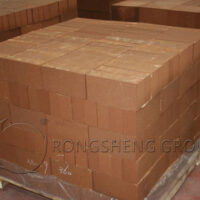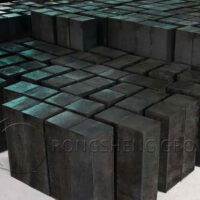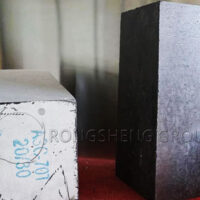Carbon brick is made of high temperature resistant and neutral refractory materials with carbon as raw material and adding appropriate binder. Carbon bricks make has good stability and high temperature resistance. It has a wide range of applications. Let’s learn about the manufacturing process and use of carbon bricks.

The production process of carbon brick is similar to that of other firebrick, but it is necessary to prevent the oxidation of carbon at high temperature, so the roasting of raw materials and the firing of products. The series of refractory bricks need to be carried out in a reducing atmosphere. Anthracite needs to be roasted before use to remove volatile matter, sulfur, and moisture, and to improve the volume stability, mechanical strength, and antioxidant properties of anthracite. When carbon bricks make, coke wants to want to pass first dry, lest because contain moisture to be exorbitant and cause molding difficulty and make the product is in firing process craze. Asphalt shall be dissolved and dehydrated to the extent that the moisture content is less than 0.2%, and the dehydration temperature shall be 120~160℃.
Carbon bricks batching is mainly based on roasted granular anthracite as aggregate, its particle size is mainly determined by the size of the products. In order to prevent oxidation, the brick is usually fired with coke powder or coal powder as a protective filler. The firing temperature is 1300 ~ 1450℃, the heat preservation time is about 20 hours, cooling to 40 ~ 60℃ when out of the kiln. Carbon bricks are liable to catch fire if they are put out of kilns at high temperatures.

This series of refractory bricks have good thermal stability, small thermal expansion coefficient, high temperature resistance, resistance to acid, alkali, salt and organic solvents. Carbon bricks make are widely used in metallurgy industry. Among them, the carbon brick of blast furnace is the largest, and the hearth and hearth of many blast furnaces are built with carbon brick. Carbon bricks can also be used in aluminum electrolyzer. In addition, it is also widely used in the pickling tank and electroplating tank of the electroplating industry, the dissolving tank of the papermaking industry, the reaction tank and storage tank of the chemical industry, and the autoclave of the petrochemical industry.









